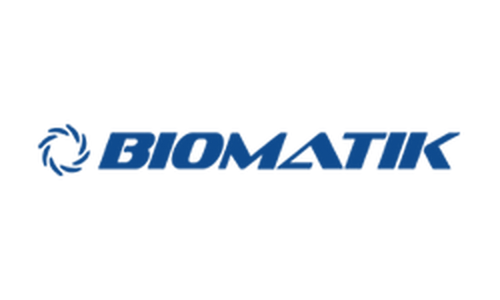Product Description
Recombinant Human Nectin-4 (NECTIN4), partial (Active) is available at Gentaur for Next week Delivery.
Gene Name: NECTIN4
Alternative Names : PVRL4;Nectin-4;Ig superfamily receptor LNIR;Poliovirus receptor-related protein 4;PRR4;LNIR
Expression Region : 31-351aa
AA Sequence : AGELETSDVVTVVLGQDAKLPCFYRGDSGEQVGQVAWARVDAGEGAQELALLHSKYGLHVSPAYEGRVEQPPPPRNPLDGSVLLRNAVQADEGEYECRVSTFPAGSFQARLRLRVLVPPLPSLNPGPALEEGQGLTLAASCTAEGSPAPSVTWDTEVKGTTSSRSFKHSRSAAVTSEFHLVPSRSMNGQPLTCVVSHPGLLQDQRITHILHVSFLAEASVRGLEDQNLWHIGREGAMLKCLSEGQPPPSYNWTRLDGPLPSGVRVDGDTLGFPPLTTEHSGIYVCHVSNEFSSRDSQVTVDVLDPQEDSGKQVDLVSASVV
Sequence Info : Partial
Tag Info : C-terminal 6xHis-tagged
Theoretical MW : 35.3 kDa
Storage Buffer : Lyophilized from a 0.2 ?m filtered 20 mM PB, 150 mM NaCl, pH 7.4
Endotoxin Level : Less than 1.0 EU/µg as determined by LAL method.-
Biological Activity : Specific activity as determined by the ability of the immobilized protein to support the adhesion of NIH?3T3 mouse embryonic fibroblast cells is greater than 40%. When 5 x 10^4 cells/well are added to plates coated with recombinant human Nectin-4 (1 µg/mL with 100 µL/well), approximately >68.8% will adhere after 40 min incubation at 37 °C.
Storage : Short term: -20°C; Long term: -80°C. Minimize freeze and thaw cycles.
Research Area : Cell Biology
Restriction : For Research Use Only. Not for use in diagnostic procedures, drug use, or for administration to humans or animals.
Relevance : Nectin-4 (PVRL4) is a type I transmembrane glycoprotein which belongs to the nectin family of Ig superfamily proteins. It contains two Ig-like C2-type domains and one Ig-like V-type domain. PVRL4 seems to be involved in cell adhesion through trans-homophilic and -heterophilic interactions, the latter including specifically interactions with nectin-1. It does not act as receptor for alpha-herpesvirus entry into cells. It is predominantly expressed in placenta, the embryo and breast carcinoma. But it is not detected in normal breast epithelium. The soluble form is produced by proteolytic cleavage at the cell surface (shedding), probably by ADAM17. Mutations in this gene are the cause of ectodermal dysplasia-syndactyly syndrome type 1, an autosomal recessive disorder.
Function : Seems to be involved in cell adhesion through trans-homophilic and -heterophilic interactions, the latter including specifically interactions with NECTIN1. Does not act as receptor for alpha-herpesvirus entry into cells.; FUNCTION
Involvement in disease : Ectodermal dysplasia-syndactyly syndrome 1 (EDSS1)
Subcellular location : Cell membrane, Single-pass type I membrane protein, Cell junction, adherens junction, Note=Colocalizes with AFDN at cadherin-based adherens junctions (PubMed:11544254), SUBCELLULAR LOCATION: Processed poliovirus receptor-related protein 4: Secreted
Protein Families : Nectin family
Tissue Specificity : Predominantly expressed in placenta. Not detected in normal breast epithelium but expressed in breast carcinoma.
Paythway : Adherensjunction
Uniprot ID : Q96NY8
 Euro
Euro
 British Pound
British Pound
 US Dollar
US Dollar








